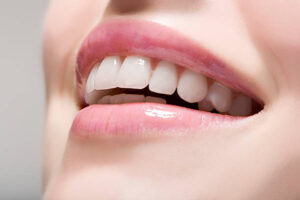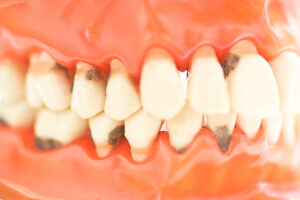Eating and speaking actions look so simple, but the biomechanics involved in making it so simple is very complex. It is natural for highly complex systems, like temporomandibular joints (TMJ), to malfunction due to one reason or the other. TMJ, a joint connecting the mandible (lower jaw) to the skull, allows jaws to open and close so that one could chew, swallow, grind, and talk easily. Damage to bones and muscles involved in the movement could cause facial pain, tenderness at the joint, and difficulty in moving jaws. Over 10 million people in the U.S. Suffer from TMJ disorder, so if you are noticing symptoms of TMJ disorder you should consult your doctor immediately for diagnosis and treatment.
What Are the Symptoms of TMJ Disorder?
Depending on the severity of the damage, TMJ disorder symptoms vary from mild to debilitating pain. You will experience mild pain in the jaw areas. Besides symptoms could be:
- Mild to moderate pain in the neck or face
- You might experience stiffness in the jaw muscles
- Some people report difficulty in the movement of the jaw
- Although rare, your jaws might get locked
- Popping or clicking sound from the affected areas
- If acute, your jaws might shift, thus affecting the dental alignment
- You might feel pain in your jaws while chewing
- Inflammation could trigger pain in the ears and facial areas
Causes of TMJ Disorder
Any disturbance in the biomechanics of the temporomandibular joint could cause TMJ disorder. Jawbones and muscles enable a hinge action with sliding motions covered with cartilage. A small shock-absorbing disk separates bones that interact with the joint, which enables smooth movement.
In most cases, immediate symptoms of TMJ disorder are due to the jaw or joint. But if symptoms develop gradually, the reasons could be:
- Arthritis induced inflammation
- Erosion of the joint due to overuse
- The habit of grinding or clenching of the teeth
- Inherent structural jaw problems
- Structural changes triggered by orthodontic braces
Experts believe some other factors could be prolonged stress, lack of sleep, and poor diet. If you have arthritis, whether rheumatoid arthritis and osteoarthritis, suffered jaw injury, or have the habit of grinding or clenching, you should consult your doctor at the earliest as this could be TMJ disorder.
When to Consult a Doctor?
If the symptoms persist for long and recur, you should consult your dentist. Based on the primary examination, he will refer you to a TMJ specialist for further diagnosis. Your TMJ specialist will discuss possible causes and treatment options. Diagnosis involves:
- Listening whether there is an unusual sound when jaws open and close
- Monitoring the range of jaw movement
- Identifying affected area by pressing around the joint
- Dental X-rays to examine teeth and jaw structure
- CT scan of the bones to involved in jaw mobility
- An MRI to examine disk and soft tissues around the affected area
- TMJ arthroscopy, if required.
What Are the Treatment Option for TMJ Disorder?
The human dental and facial structures are highly complex. Following the diagnosis of TMJ disorder, your doctor may start holistic treatment medications and therapies, and in some cases surgery. In most cases, TMJ specialists start more than one treatment to control pain and bring the bones and muscles in the normal position.
Medications
Depending on the severity of your condition, your doctor will start with medication to relieve pain and inflammation. Here are some of the most common medications prescribed for TMJ disorder:
Pain relievers and anti-inflammatory: In most cases, over-the-counter pain medications help in managing pain, but if pain persists for long, your doctor may prescribe stronger pain relievers.
Tricyclic antidepressants: Although mostly prescribed for treating depression, they can be used in low dosage for controlling pain induced by TMJ disorder. It helps in controlling bruxism and sleeplessness.
Muscle relaxants: Your dentist might prescribe a suitable muscle relaxant to deal with pain induced by muscle spasms.
Exercises for TMJ Pain Relief
It is not exactly clear how exercises help relieve TMJ pain, but studies claim that performing certain exercises helps increase the mouth opening range. According to the American Academy of Family Physicians (AAFP) these exercises help in improving jaw mobility and eases pain if done in the right manner:
Strengthening Exercises
TMJ disorder affects tenderness of the jaw and surrounding muscles. Any exercise that could help regain the strength of the muscles could be of great help. However, experts advise avoiding strengthening exercise during intense pain, as it could worsen the situation.
It is pretty simple, all you need to do is place your thumb under the chin and push your chin downward against your thumb. Increase thumb force gradually, and keep your mouth open for 5-10 seconds before redoing it.
Another easy and effective strengthening exercise is to open your mouth as wide as you can and put your index finger between your lower lip and chin. You have to apply moderate force inward while closing the mouth against the force applied by the index finger.
Relaxation Exercises
Tension-producing stress is one of the factors responsible for TMJ disorders. Simple muscle relaxing exercises could help in relieving the pain.
Controlled breathing exercise is highly effective in relaxing muscles and joints, including TMJ. Inhale slowly and let your stomach expand and then exhale slowly. Ideally, one should repeat it at least 10 times, but so as your comfort level permits.
You can make progressive relaxation part of your daily exercise routine as it will make you aware of areas of tension.
Stretching Exercises
If your TMJ pain is intense, you can try stretching exercises during a flare-up to reduce joint and muscle tension.
To relax jaw muscles, you should let your tongue rest behind your upper front teeth and then open your mouth as much as you can while relaxing muscles involved in jaw movement. Keep your mouth open for 5-10 seconds to let muscle stretch.
Another highly effective stretching exercise is placing the tip of your tongue on the roof of your mouth and then let the lower jaw protrude outward and then back to normal position. You should hold for 5-10 seconds in each position.
Goldfish exercise is the most recommended stretching exercise for TMJ pain. First, place the tongue on the roof of your mouth and then place one finger where TMJ is located. The next step involves putting your middle or index finger on your chin and then letting your lower jaw drop as much as you can and then back to normal position. Experts recommend repeating it six times in one set.
You can try another stretching exercise by placing thin objects like a paintbrush or pencil in between your front teeth and then protrude the lower jaw. You should hold your mouth in this position for 20 seconds. You can make the jaw movement side-to-side to achieve more mobility.
You can increase the thickness of the object as it becomes easiest with time.
TMJ pain specialists recommend doing chin tucks. First, push your shoulder back and chest up and then pull your chin straight back. It will create a “double chin”. Be in the position for three seconds and repeat 8-10 times.
How to Prevent TMJ Disorder?
You can recover from TMJ disorder with suitable treatment and proper exercises. But you can prevent the occurrence of TMJ symptoms by maintaining proper dental care and keeping teeth in natural alignment. Any kind of dental ailments like a broken or missing tooth, cavities, and gum inflammation can aggravate the pain, so you have to keep your dental system healthy to prevent TMJ pain. Oral health professionals recommend these TMJ pain preventive measures:
- One should maintain oral hygiene by brushing twice a day and flossing at least once daily.
- Visit your dentist regularly, at least once in 6 months, to keep the dental system in perfect shape.
- Inform your dentist at the earliest if you are experiencing TMJ symptoms.
- You should avoid eating hard foods and chewing gums.
- Always use both sides of the mouth for chewing.
- Avoid smoking
Bottom Line
TMJ disorder is normal and in most cases, it comes under control with simple medications and TMJ exercises. But if the condition is severe, your doctor might recommend arthrocentesis to inject fluid into joints so that debris and other byproducts could be removed, injecting type A botulism toxins, or modified condylotomy unlock jaws. If TMJ disorder is caused by injury, then invasive surgery might be required, but the effectiveness of invasive procedures to control pain is questionable. TMJ exercise is highly effective in relieving pain, but it should be avoided when in severe pain. It might be tempting to start TMJ exercises aggressively, but avoid doing so as it could worsen the pain. If pain during exercise is intolerable, you should consult your doctor to seek help. Dental professionals recommend a warm towel and ice pack therapy for pain relief, but you should not do it for more than 15 minutes at a time.
Sources:
- Shafer, David M., et al (1994). “Tumor necrosis factor-α as a biochemical marker of pain and outcome in temporomandibular joints with internal derangements.”
https://www.sciencedirect.com/science/article/pii/0278239194902178 - Dai, Qiaoding, Liping Xu Di Zhou, and Xinwei Song (2018). “Curcumin alleviates rheumatoid arthritis-induced inflammation and synovial hyperplasia by targeting mTOR pathway in rats.”
https://www.ncbi.nlm.nih.gov/pmc/articles/PMC6284537/ - Elgohary, H. M., Eladl, H. M., Soliman, A. H., & Soliman, E. S. (2018). Effects of ultrasound, laser and exercises on temporomandibular joint pain and trismus following head and neck cancer.
https://www.ncbi.nlm.nih.gov/pmc/articles/PMC6325320/ - Ingawale, S., & Goswami, T. (2009). Temporomandibular joint: disorders, treatments, and biomechanics.
https://link.springer.com/content/pdf/10.1007/s10439-009-9659-4.pdf



